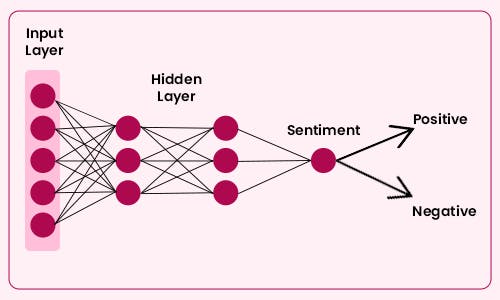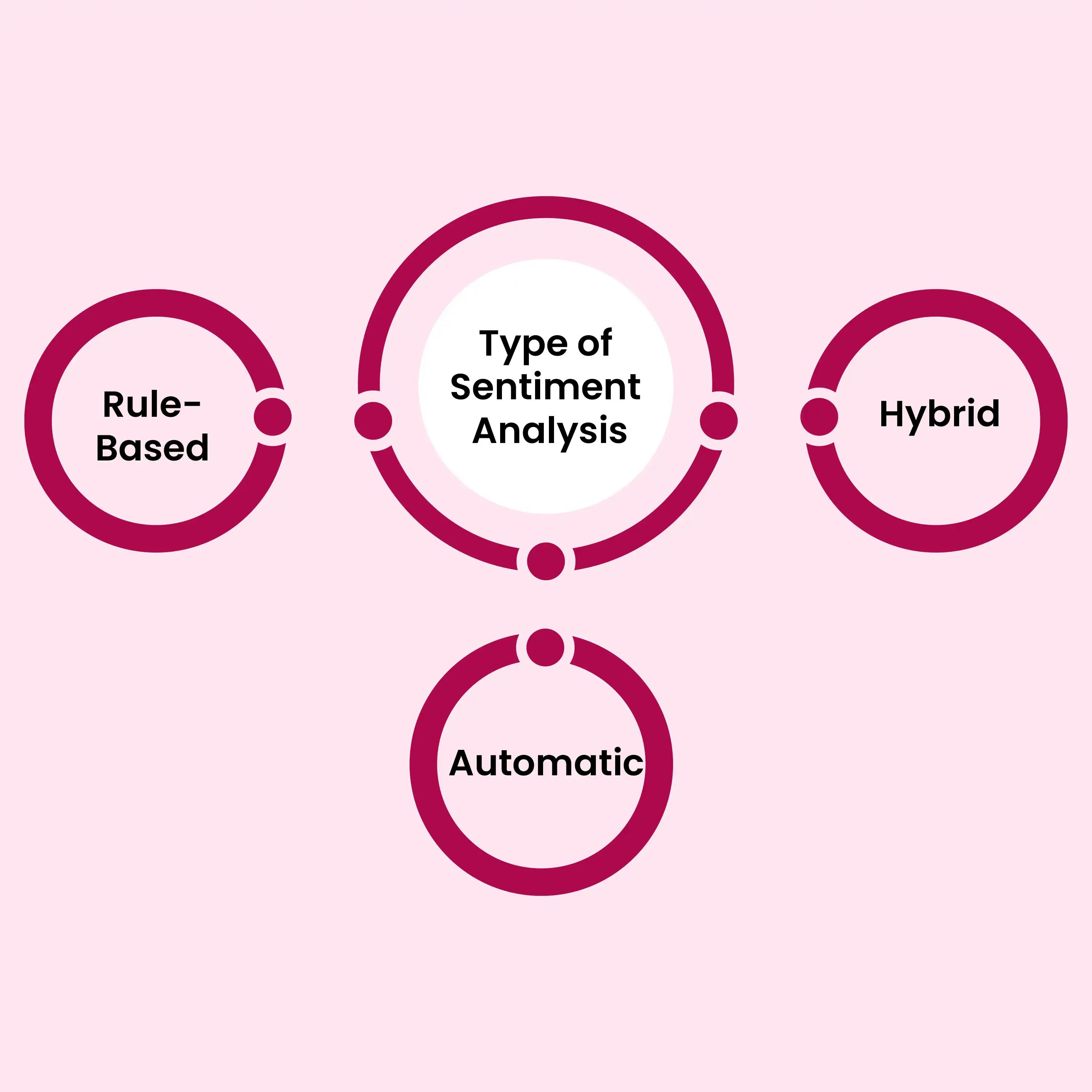
,
Sentiment analysis is a conventional natural language processing (NLP) method widely used by developers around the world. It is used to categorize the content as per the emotional tone. Machine learning (ML) algorithms can model different things and adapt to altering input.
Experts in these algorithms are well aware that manually analyzing the sentiment in the content is not possible, so they implement deep learning algorithms and use machine learning services to improve the efficiency of the business processes. Successful implementation of ML services, they get insights to successfully develop realistic strategies.
Scroll down to learn about the algorithms and applications associated with sentiment analysis along with real-world use cases.
Before moving ahead, Let’s shed some light on
What is Sentiment Analysis?

Sentiment analysis is opinion mining and one of the advanced methods of natural language processing that finds the emotional tone behind the text’s body. Many organizations use this popular method to find and categorize opinions regarding products, services, and ideas. They properly use machine learning, data mining, computational linguistics, and artificial intelligence to mine text for complete sentiment and subjective information.
Sentiment analysis lets companies find the communications’ emotional value. Communications in the form of text, audio, and video have played the main role behind business development activities online in recent years. Top businesses use sentiment analysis to appraise customer messages, online reviews, call center interactions, social media posts, and other aspects of content. Companies providing customized machine learning development services make their clients satisfied.
In most cases, companies prefer sentiment analysis to track down the changes in attitudes toward developing the products, and services they offer to their customers. It is helpful for companies to identify possible changes to make to their products to achieve better customer satisfaction.
Uses of Sentiment Analysis
The first-class sentiment analysis tools are designed to be used in almost every sector for different applications. In social media monitoring, sentiment analysis is used as a key element to track customer sentiments across social networking platforms.
Good sentiment analysis is vital for monitoring brand awareness, reputation, and success rate at a particular time. It is also helpful for analyzing the consumer reception of all new features to find possible product improvements. If you like to evaluate the overall success of your marketing campaign, then you should make use of this sentiment analysis.
Experts in sentiment analysis properly use it for pinpointing a demographic or target audience. They conduct market research especially competitive insights and emerging trends using sentiment analysis. The most successful machine learning service providers properly use the best resources to enhance every aspect of their service to all clients. You can use sentiment analysis to categorize customer service requests on time and assess the complete effectiveness of customer support.
How do machine learning algorithms help sentiment analysis?
Sentiment analysis categorizes the complete content as per the emotional tone. However, machine learning algorithms model different features and adapt to altering input. Reliable and successful companies implement machine learning algorithms to increase business processes and get insights to develop the best strategies.
Choosing the right machine learning Development Company on time is vital to getting affordable and high-quality service as per the expectations and needs of your business. Take a look over how ML algorithms help Sentiment Analysis.
- Supervised Learning
The data is labeled manually in supervised learning by the annotators. This is the main reason why the algorithm can classify unlabeled and incoming data as per the pre-labeled data. This reputable method outperforms unsupervised and semi-supervised methods because it is based on data manually labeled by humans. Popular supervised algorithms are Support Vector Machines, Logistic Regression, Maximum Entropy, Naïve Bayes, Decision Trees, and Random Forest. - Semi-Supervised Learning
Semi-supervised learning successfully uses labeled and unlabeled data. This is because it does not need as much human intervention as supervised machine learning. The time taken by this method is less to conduct analysis. Unlabeled data helps extract language-invariant elements. However, labeled data is used as a classifier. - Unsupervised Learning
It is a lexical-based method where the overall data is clustered per shared characteristics, including word pairings or famous terms. It uses predefined dictionaries or lists instead of training data or modeling. - Deep Learning Algorithms
Deep Learning algorithms are based on neural networks and outperform other methods of ML (machine learning). They need a maximum amount of data for training the model. They give first-class results especially when applied to large datasets. A certified machine learning company uses the latest technologies to ensure 100% customer satisfaction. Such companies are using Convolutional Neural Networks, Long-short Term Memory, Deep Belief Networks, etc. for industries like e-commerce, entertainment, and advertising to deliver maximum satisfaction.
Algorithms of Sentiment Analysis in Machine Learning
Here are the two main sentiment analysis methods used in ML applications. Let’s dig deeper into those:
1. Rule-based approach
Rule-based sentiment analysis is based on the algorithm with a defined description of an opinion to find. This method includes, but is not limited to the polarity, subjectivity, and the opinion’s subject. It involves a basic natural language processing routine.

2. Automatic Sentiment Analysis
Unlike a Rule-based algorithm, automatic sentiment analysis depends more on ML techniques. It is a good approach that digs into the text and delivers the goods. In this method of approach, Sentiment analysis uses Machine Learning (ML) to understand the data. The overall accuracy and precision of the operation are maximized to help businesses process the information on different criteria without getting complicated.
All visitors to the renowned artificial intelligence development company can get the most expected assistance and improve their approach to using automatic sentiment analysis which involves supervised machine learning algorithms. You can also explore the data using unsupervised algorithms.
This kind of approach is very effective in determining binary sentiment classification or multi-class sentiment classification while predicting emotions like anger, sadness, jealousy, amusement, and so on.
3.Hybrid Sentiment Analysis
Hybrid Sentiment Analysis exploits both rule-based approach and statistical-based ML methods for performing polarity detection. By using both methods, this type of analysis produces the optimum feature subset.
When compared with the other two methods of sentiment analysis, this hybrid technique achieves far better performance and accuracy in detecting emotions. To ability to inherit the high accuracy from the ML-based approach and high stability from the rule-based approach.
As this method integrates both textual features and user-product interactions for improving the effectiveness on improving classification performance, industry experts prefer this Hybrid method of sentiment method for document-level sentiment classification.
Applications of Sentiment Analysis in Machine Learning
Several sentiment prediction applications are available in machine learning. Have a glance at some popular sentiment analysis applications.
1. Sentiment toward Bitcoin and Price Changes
Customer reviews on Reddit and Twitter provide great insights into customer sentiment. The data in this study was properly extracted from Reddit and Twitter. Experienced and smart researchers in the artificial intelligence company have successfully analyzed the correlation between the public sentiment on social media and Bitcoin price changes by implementing the Long and short term memory and Recurrent Neural Networks. They found that their model gives accurate results because of their less Root-Mean-Square Error.
2. Improving Product Recommendations using Customer Experience with Sentiment analysis
Experienced researchers use the first-class machine learning-based regression model to successfully analyze the sentiment in the complete reviews to design a hybrid recommendation system. With the help of Sentiment Analysis, more than 142 million reviews received on highly popular websites Shop Clues, Amazon, and Flicker were analyzed successfully.
The latest updates in artificial intelligence development services encourage business people to make good decisions for business development. The main three elements used to evaluate the proposed HRS performance are the mean absolute percentage error, mean absolute error, and mean squared error. HRS precisely predict customer sentiment while shopping from a specific supplier.
3. Sentiment toward Smartphone Brands
There is a study about the five popular brands of Smartphones on the market namely Apple, Samsung, Oppo, Huawei, and Xiaomi along with the sentiment in the complete customer reviews towards these companies. These things have been properly investigated as per 9000 customer reviews.
Qualified researchers successfully combined different machine learning models like multilayer perceptron neural networks, support vector machines, decision trees, and naïve Bayes algorithms to measure the predicting sentiment scores’ accuracy. Customers have maximum positive sentiments towards Apple and Samsung phones. Samsung phones have the maximum customer satisfaction.
Conclusion
Sentiment analysis is an outstanding technology for businesses as it allows them to get realistic feedback from customers in an unbiased method. Businesses can use this great value-added element on their web projects, apps, or systems. The expert-led team of Codiste successfully deals with the product’s perception and understands the market using the sentiment data’s lens and paves the path for business growth.
Users of the applications and algorithms of sentiment analysis in machine learning get the most outstanding benefits. If you are looking for experts to avail Sentiment Analysis applications for your business, consider approaching Codiste. Codiste is one of the reliable machine learning service providers and has years of experience in serving global clientele efficiently. Ask us now!




